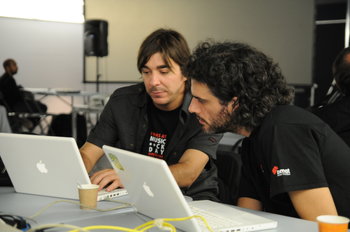
Availability
The service will be available 99.95% of the time.
Response Time
The service will respond to requests within 1 second.
Load Time
Screens will load within 3 seconds.
Data Backup
Data will be backed up daily.
Data Restored
Data will be restored within 1 hour of an authorized restore request.
Maintenance Window
Maintenance downtime will be restricted to Sunday mornings from 02:00 to 04:00.
Scalability
The service will be scaled up to 100 machines upon demand.
Help Desk Availability
Help desk will be available by phone, email and chat on a 24/7 basis.
First Contact Resolution
80% of help desk requests will be resolved within the first interaction with the user.
Incident Response Time
A response to incidents will be initiated within 15 minutes of notification.
Resolution Time
Level one incidents will be resolved within 3 hours.
Transparency
An incident report will be shared with customer within 24 hours.
Throughput
The service will handle loads of up to 1000 transactions a second.
Performance
North American network latency will not exceed 10 milliseconds.
Quality
The defect rate will be less than 1 percent.
User Satisfaction
The user satisfaction rate with help desk will be 80% or higher.
Uptime
Technology services typically include an uptime commitment such as 99.99%, known as four nines. Uptime is also commonly known as availability.Call Metrics
Call center services typically include an array of call metrics such as average queue time and call abandonment rate.Customer Satisfaction
Customer services such as a help desk are commonly measured with customer satisfaction rate.Turn Around Time
The time required to complete an activity. Measured as an average, mean or maximum. For example, an SLA for a delivery service may commit to an average delivery time of 2 days and refunds if deliveries are later than 4 days.Quality
Measurements of service quality may be automated or obtained by quantification. For example, a communications platform may offer a call quality objective in its SLA that can be measured by asking people to rate the quality of calls.Mean Time to Recovery
The mean time to recover from incidents.Mean Time Between Failures
The mean time between incidents. Usually only measured for major incidents.Backlog
Metrics related to unfinished work such as service request backlog. Often measured as the average age of the backlog. For example, a help desk may guarantee that its request backlog will not exceed an average age of 2 days.Business Results
Service commitments directly related to business results such as revenue, sales conversions or customer churn. This is appropriate in cases such as business process outsourcing where a service is directly delivering business objectives.| Overview: Service Level Agreement | ||
Type | ||
Definition (1) | A set of formal commitments made to a customer by a service provider. | |
Definition (2) | A contact that specifies a set of measurable service objectives. | |
Also Known As | SLA | |
Related Concepts | ||






































